Despite the years of industrialization and urbanization that has occurred in Southeast Chicago and Northwest Indiana, the natural wonder that is Wolf Lake has survived. While the lake is much reduced in size and shows the scars of urbanization it remains one of the most bio-diverse eco-systems in the Midwest.
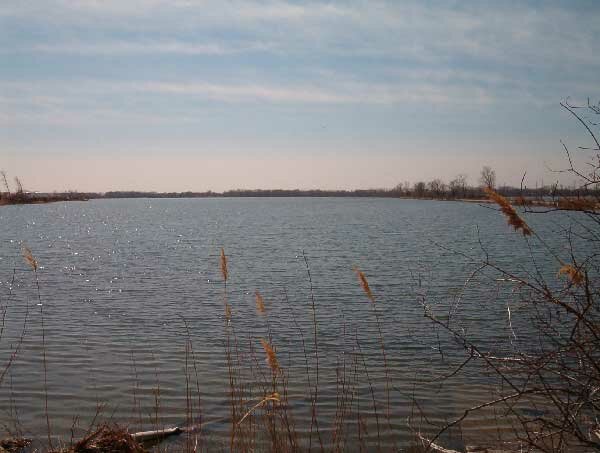
Wolf Lake as seen from the North Shore, April 2009
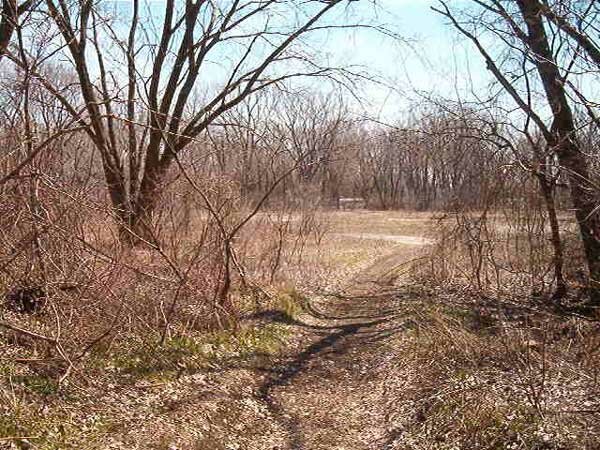
Path leading to the Nike Ajax site
For over 100 years, Wolf Lake was roughly handled due primarily to the steel industry and a lack of understanding. The remnants of urbanization and even the Cold War remain quite visible on the lake's shore, yet these scars add to the charm as well as the accessibility of the natural wonders of the area.
Wolf Lake straddles the Illinois/Indiana border. Over the years, the lake's shoreline has dramatically changed due to urban encroachment. Causeways for rail lines as well as dikes have been built splitting the lake into smaller bodies of water, slag from the steel mills has been used to fill portions of the lake for development, and surrounding marshes have been drained which caused the lake's water level to drop. This same urbanization has almost eliminated any vestige of other area lakes, especially Lake George in Indiana and Hyde Lake which was north of old Hegewisch.
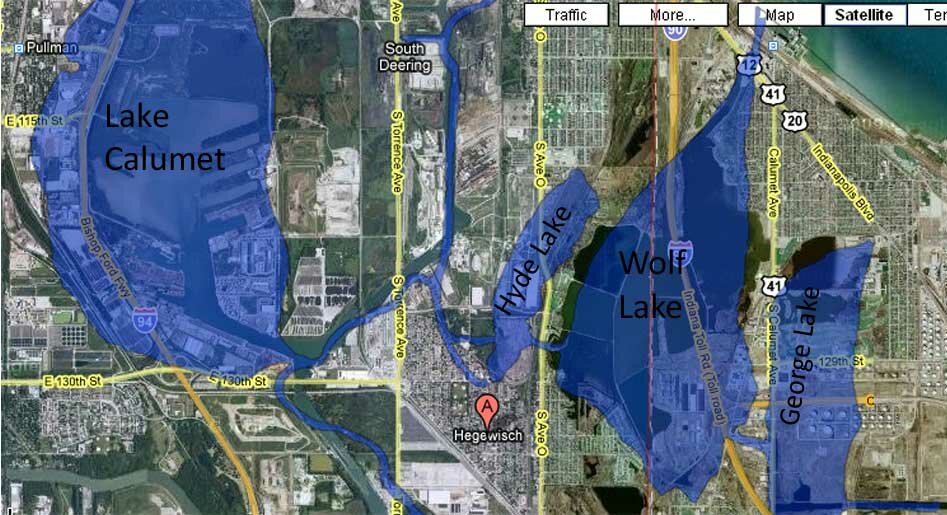
A satellite view of Hegewisch superimposed with likely location of area lakes as shown on a 1903 survey map.
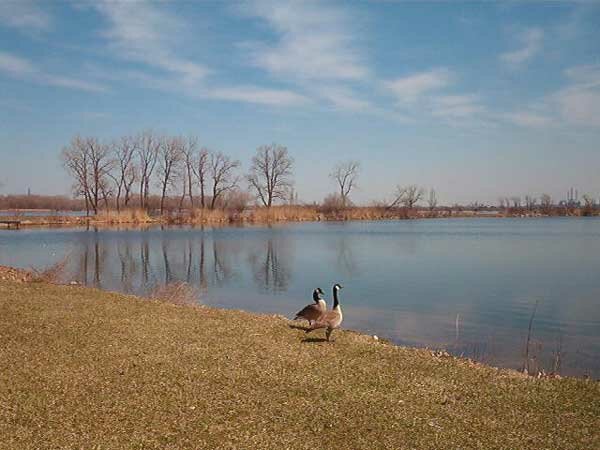
Canada Geese stand on
the Western Shore of Wolf Lake
The William W. Powers Conservation Area (WPCA) straddles the eastern shore of Wolf Lake and is entered at 126th and Avenue O. A picnicking area acts as the front yard of center. The grassy area has picnics tables, stoves, and rustic toilet facilities. Almost any week-end during the Summer, it seems like some family is having a reunion in the Picnicking area. Numerous trees provide shady spots yet there is also plenty of room to play pick-up games of flag football or other family type events.
Once you leave the picnic area you can explore the region around Wolf Lake by taking numerous foot paths that lead from Wolf Lake Blvd. This boulevard is a winding paved road that runs from 130th around Avenue N to the north shore of Wolf Lake and the Indiana border.
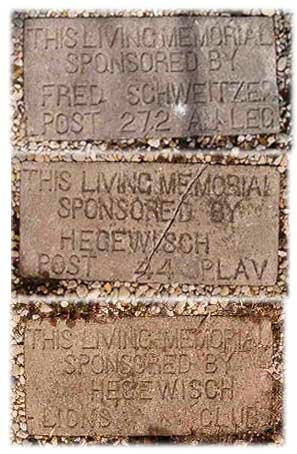
Memorial stones
Two bike paths service Wolf Lake and connect Hegewisch with the East Side. The first bike path begins near the Babe Ruth field at 126th and Carondolet and crosses into WPCA. At that point bikes share Wolf Lake Blvd north until it can connect to the main bike path. Heading north from the picnic area, stay on Wolf Lake Blvd until it is possible to turn left. (this will be just before the main boulevard takes a sharp right turn. A 150 foot path will lead you to the main bike path
The main bike path enters Wolf Lake Prairie at 119th and Avenue O. The path cuts through Eggers Woods and enters the East Side at 112th and Avenue F. The bike path ends near 104th and Avenue D. The bike path follows an abandoned rail line that was used to serve the U.S. Steel's South Works plant; an example of how an old industrial scar has been re-used to benefit the people of the area without causing increased environmental damage to the region.
Nature lovers will love the bio-diversity of the region and may want to plan a day trip that includes Wolf Lake and near by Powderhorn Lake.
The Dikes & Causeway
Despite the obvious signs of encroaching urbanization crisscrossing Wolf Lake, the region remains one of the most diversified regions for plant and animal life in the Midwest!
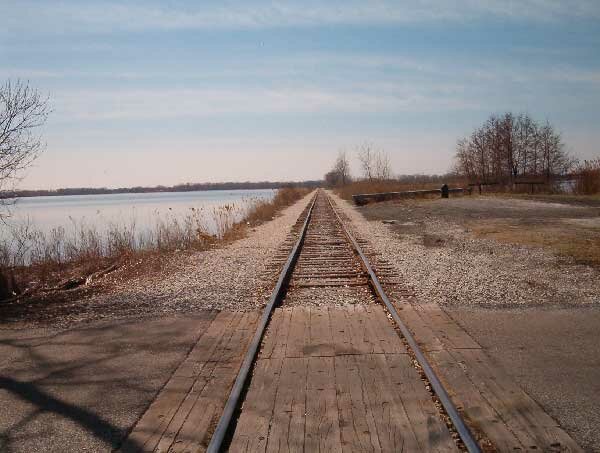
Indiana Harbor Belt rail line. The line runs just west of the Indiana/Illinois border. The causeway divides Wolf Lake in half.

A boat launch for Wolf Lake off 133rd and Avenue K. On any given summer day, locals will be seen fishing along the shores of the launch.
Many years ago, Wolf Lake was split in half roughly along the Indiana/Illinois border by a causeway built for a rail line. Today, that causeway remains active and is used by the Indiana Harbor Belt Railroad. The Illinois side of Wolf Lake further divided into five "impoundments" separated by dikes. These dikes caused numerous problems with the lake's water level as well as other ecological problems. In order to reverse the effects, the dikes and causeway have been breached. In some instances this involved the insertion of large drain pipes passing from one body of water to the other allowing full traverse of the dike or causeway. In other instances the dikes were actually breached and there is no bridge in place to allow one to walk the length of the dike. At the same time the the breaches were made, the lake's bottom was dredged and deep holes were added to improve the bio-diversity of the water. In some places the relatively shallow lake reaches a depth of 20 feet.
As mentioned, the rail causeway is still in use so walking on this causeway could be dangerous as there is no place to go when a train comes through! To the east of the rail causeway is the Indiana side of the Lake. Another causeway runs north-south just inside the Indiana border. Part of the causeway is a service area for an elevated portion of the Indiana Toll Road (I-90) which soars above the lake. You can also see power lines crossing the lake next to the toll road.
Flora (plant life) for the region includes:
Non invasive flora include: willow, cottonwood, water maples. The endangered Carex garberi (sedge), Carex viridula (sedge), an endangered orchid, and the threatened marsh speedwell are plants that grow in the neighboring wetlands. An array of rare aquatic plants are also found in the area. Prickly pear cactus is found in nearby Powderhorn Prairie.
Invasive Flora include: Both invasive and non-invasive phragmites (reed grasses) are in the area. Other invasive plants include buckthorn, honeysuckle and autumn olive.
Fauna (animal life) includes:
Invasive animals:
Birds: Monk parakeet, a South American Bird that breeds and nest in the area
Native to the region:
Mammals: White tail deer, raccoons, opossums, squirrels, cotton tail rabbit, coyote. A mating pair of red fox have also been sited in the area in recent years.
Birds: Cardinals, blue jays, finches, orioles, woodpeckers, teal, mallards, Canada geese, mute swans. The lake and neighboring wetlands provide nesting sites for the endangered black-crowned night heron, little blue heron, yellow-crowned night heron and yellow-headed blackbird. Bald Eagles have also been spotted in the area.
Amphibians: North American toad, Fowler's toad, pickerel frogs and American bullfrog are common to the area. Blanchard's cricket frog and gray tree frogs are rare but may be in the area.
Reptiles: Common garter snake, Chicago garter snake and red eared slider turtles have been seen in the area. The turtles may have been introduced
Fish: Largemouth bass, northern pike, bluegill, redear sunfish, crappie, bullhead, carp, walleye, hybrid muskie, yellow perch. Wolf Lake is also home to the endangered Lake sturgeon and the threatened banded killifish
The Nike Ajax Site (C-44)
Nike Ajax missiles were surface to air missiles designed to defend Chicago and vital steel industry located in the region during the turbulent years of the Cold War. The Nike Ajax site is located near the northwest corner of the lake. In order to build the site, a portion of the marsh and the northern shore of the lake was filled with slag from the steel mills that used to be in the area. (Slag is a waste bi-product from the production of steel) The bike path runs to the west of the Nike site. The Indiana Harbor Belt rail line to the east. Wolf Lake Blvd. ends at the southern edge of the site. (If you take a wrong turn, you will leave the main boulevard and wind up on an access road that terminates in a big parking lot near the Illinois/Indiana border. You'll know you made a wrong turn once you cross the IHB railroad tracks!)
Not much is left at the site. What you will find are the foundations for numerous building and launch pads. The memorial for the Nike site is actually located in the picnic area near Veteran's Park Way. Despite the lack of major artifacts, those who lived through the Cold War or have studied its history may have a sense of awe when walking among the ruins of this former missile site. C-44 was one of 22 Nike Ajax batteries of the Chicago Defensive Area, the largest defensive ring deployed in the Continental United States.
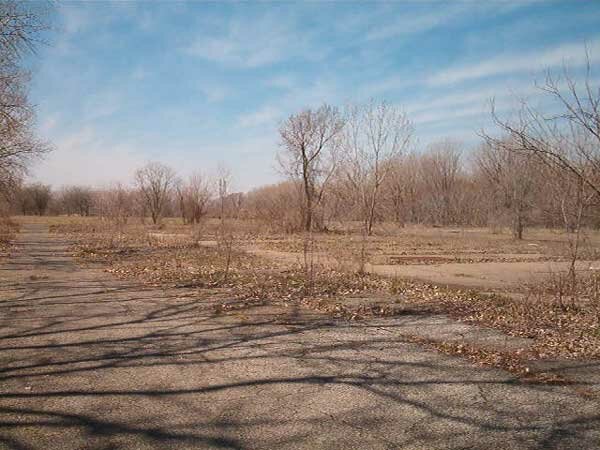
Paved area near the Nike Ajax bunkers.

Memorial located in the picnic area, the picnic grounds can be seen in the background. This is only the warhead of a Nike Ajax missile.
Park Rules:
- Groups of 25 or more are welcome and encouraged to use the park's facilities. They are required to register in advance with the site office to avoid crowding or scheduling conflicts.
- At least one responsible adult must accompany each group of 15 minors.
- Pets must be kept on leashes at all times.
- Actions by nature can result in closed roads and other facilities (Wolf Lake Blvd is barely above the Lake's Spring time level) Please call ahead to the park office before you make your trip.
- Hunting: Wolf Lake is the only place within the city limits where duck hunting is allowed (from designated duck blinds)
- Ice Fishing: Weather and ice thickness permitting.
- Fishing: Fishing is permitted from the shore and boats. Illinois license is required for the Illinois side of the Lake.
- Boating: Sail, paddle or power (10 HP or less) is permissible on the lake. Three boat launches are located along the lake shore
- We hope you enjoy your stay. Remember, take only memories, leave only footprints.
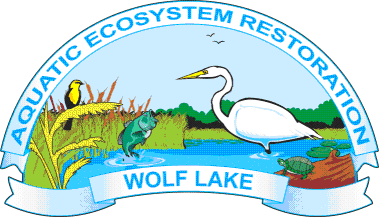
Contact Wm. Powers:
- Address: 12949 Avenue O. Chicago, IL 60633
- Phone: 773.646.3270
- Email: dnr.wmpowers@illinois.gov